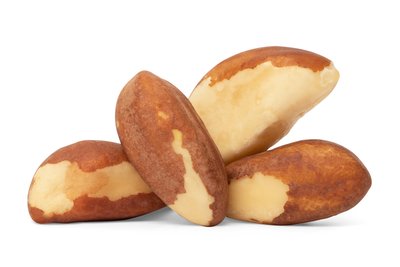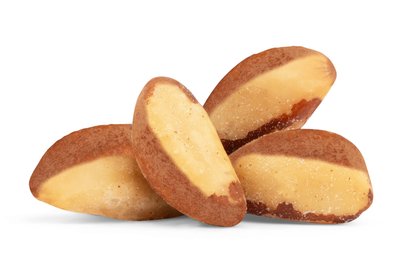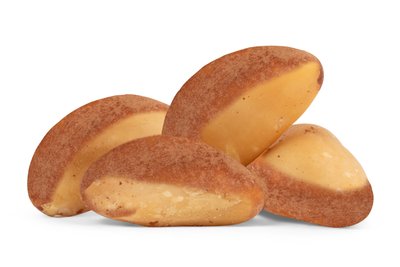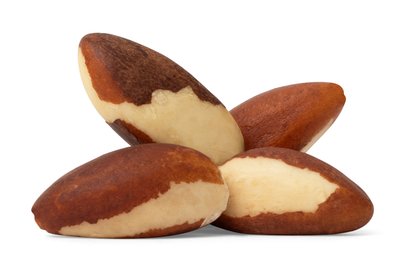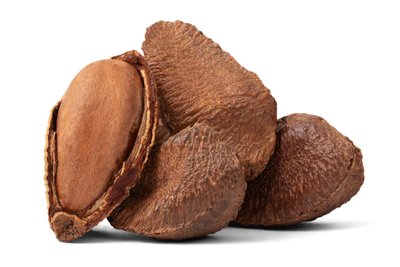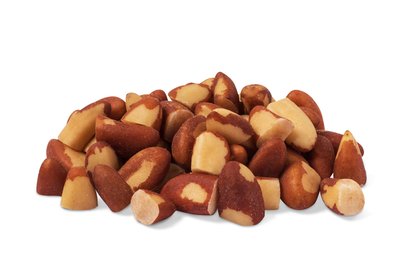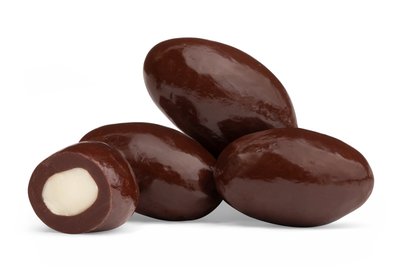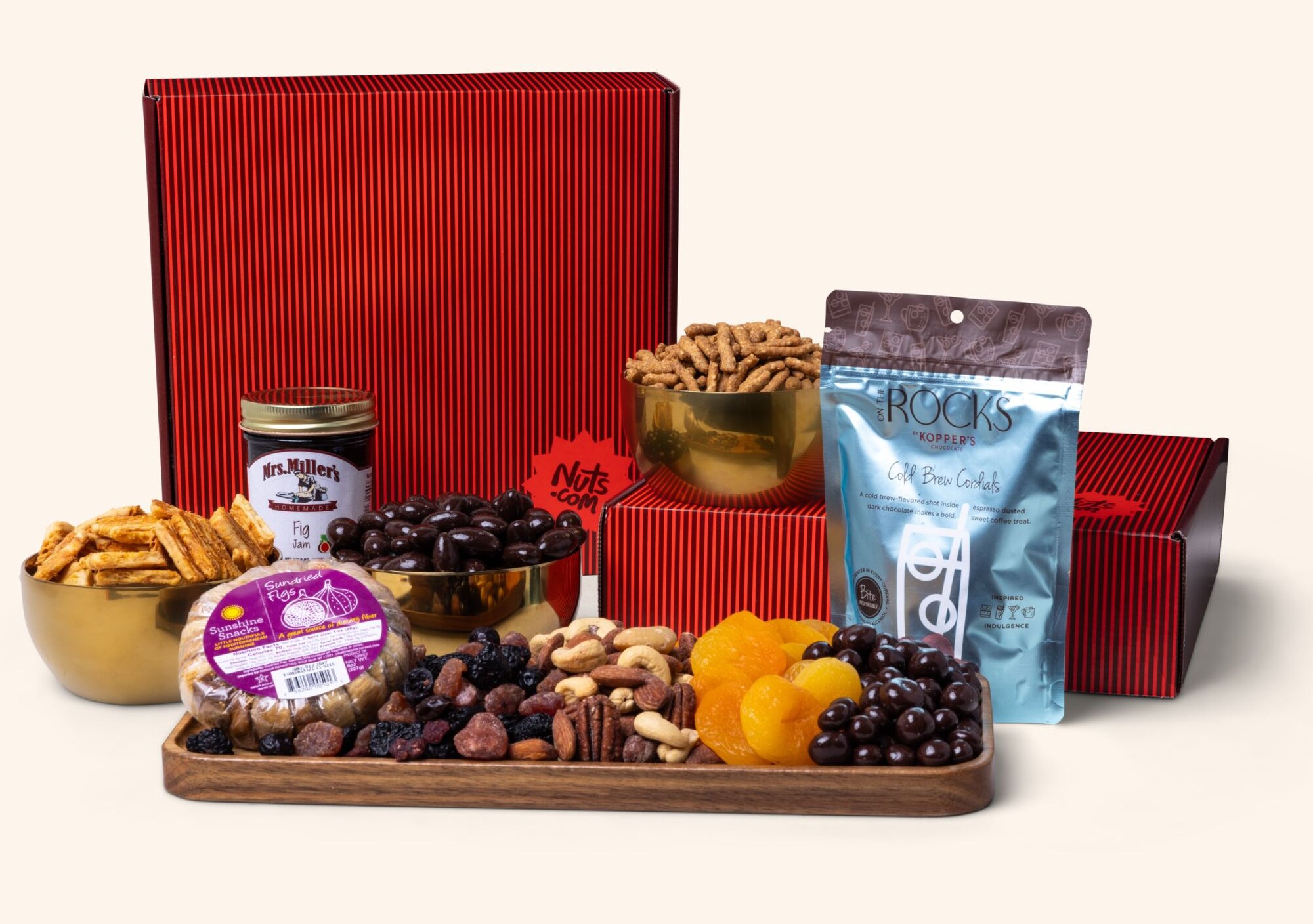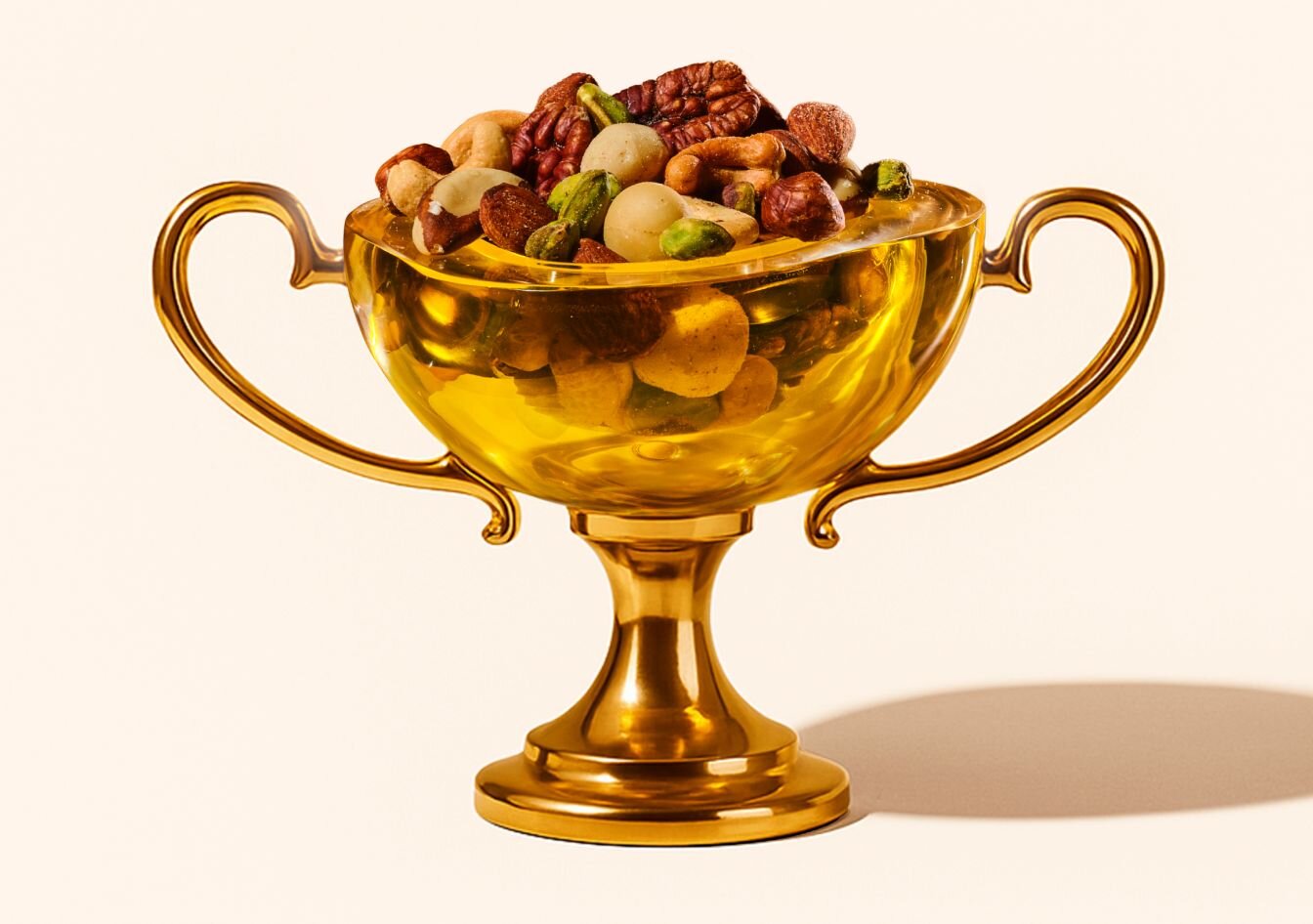Brazil Nuts
Sort by:
About Brazil Nuts
The Brazil nut tree grows up to 50 meters tall, making it one of the largest trees to grow in tropical rain forests. The fruit of the tree resembles a 4-6 pound coconut and can hold as many as thirty Brazil nuts within it.
Contrary to the nut’s name, Bolivia is actually the largest exporter of Brazil nuts, responsible for about half of the world’s production. Brazil is the second largest producer of Brazil nuts. In Brazil, it is illegal to cut down a Brazil nut tree in efforts to support their conservation because Brazil nut production has only been proven successful in its natural rain forest habitat. Efforts to grow the trees on cultivated land often fail because it is difficult for the species of bee required for pollination to survive in such an environment.
Tastes and Uses
Brazil nuts have a delicate buttery taste and smooth texture. As a snack, they are an excellent source of antioxidants, vitamins, monounsaturated fats, and protein. Brazil nuts can also be chopped and used in baked goods, and have a similar taste and feel to macadamia nuts when used in cookies. Brazil nut pieces also add a nice crunch to salads. Partially substitute Brazil nut flour for regular flour in cake or brownie recipes to add a pleasant nutty richness and nutrient boost.
Brazil Nuts Health Benefits
1) Loaded with Antioxidants: Brazil nuts contain 2,500 times as much selenium as any other nut. Selenium is a powerful antioxidant that can prevent damage to cells by free radicals, boost the immune system, and increase red blood cell concentration. A 2008 study in The American Journal of Clinical Nutrition found that consuming 2 Brazil nuts daily was an effective replacement for selenium supplements.
2) Cardiovascular Health: A 2005 study conducted by researchers from Harvard Medical School found that consuming as little as two ounces of nuts, such as Brazil nuts, per week as part of a healthy, balanced diet can help lower the risk for heart disease.
3) Brain Food: The high selenium content of Brazil nuts may boost mental performance. A 2002 study conducted by researchers at the Indiana University School of Medicine found that elderly patients who consumed the highest levels of selenium had higher cognitive test scores than those who consumed the lowest levels of the element. This research has positive implications for the effect of selenium on cognitive function.
How are Brazil nuts harvested?
Brazil nuts are the seeds of a South American tree that grows in the Amazonian rain forest. The seeds grow in pods the size of a man’s hand, with each pod containing 10 to 30 Brazil nuts. Pods mature during the wet, rainy season and are ready for harvest when they fall to the forest floor. The people who harvest Brazil nuts are known as castañeros, and they collect the nuts for processing. In the factories, the nuts are sorted by size, sent through a drying process and the nuts are mechanically separated from their shells.
Brazil Nut Storage
Brazil nuts can be stored in a cool, dry place such as a pantry for up to one month. For longer-term storage, keep them in the refrigerator for up to 9 months, or transfer them to the freezer where they can be kept for up to a year. When freezing Brazil nuts, the original package should be placed inside a resealable freezer bag.
We also offer Wholesale Brazil Nuts.



